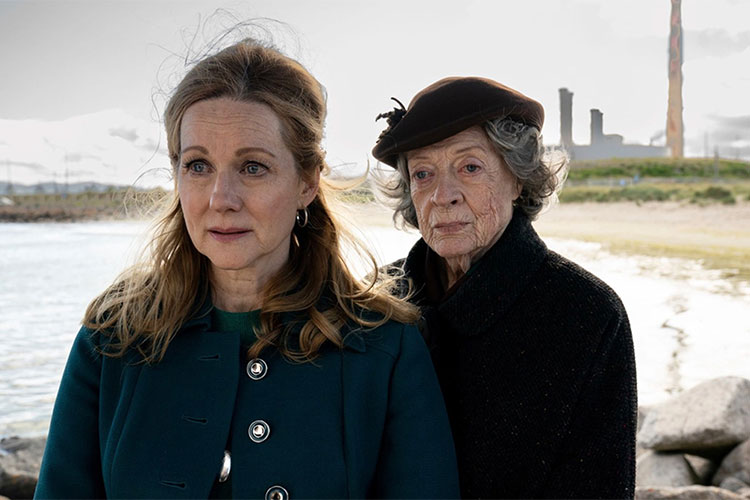The following questions and answers are excerpted from a conversation that followed the NBR screening of The Miracle Club.
Period pieces are notoriously cumbersome and expensive to make. Did you find that to be the case?
Thaddeus O’Sullivan: The biggest challenge in this context was really the whole Lourdes issue. Trying to get permission to shoot at Lourdes was totally impossible. So we built the set– and that was tricky, both in terms of getting the scale and details right, and in terms of controlling the costs. And so I’d say that was the biggest challenge, and that was more of a logistical thing, really. In terms of shooting in very small spaces, working class homes, you know… we would normally go into a location which we couldn’t do in this case. I think with these three actors, you know, if we hadn’t been able to give them room to just be on the set and work… it would have been difficult. So we we had to build all of the smaller sets. They weren’t difficult to build or particularly expensive; it was just something we had to do. And the design of those was very carefully researched by the production designer. And even though he’s a little younger than me (quite a bit younger than me), he knows the period pretty well. And so we had a very creative time discussing all of the details, down to the wallpaper. All of the stuff. He was incredibly detailed, even with stuff he knew would not be on camera. He would still have it there for the actors to see as well, even for items the actors would pick up or look at that the camera would never see. And it was interesting to see their reactions, to know that somebody was thinking about the set with that level of detail. And that made the actors feel pretty good.
the story itself is really about this kind of self-discovery
Did you feel like a kid in a candy store, working with such an amazing cast?
TO: I was probably too nervous for that! Yes, I was at the outset: these are just the best actors around. And it was daunting. Maggie Smith said to me one day, “What’s wrong with you?” And I said, “Look, I’m standing here in fear,” and she said, “we’re all standing here in fear… just tell me what to do.” That was the second or third day. And I suppose I had one of my gloomy faces on and she was teasing me. But that kind of broke the ice. Kathy Bates is very easy to direct, very, very straightforward, and does a sort of forensic analysis of the script, which, given we’ve had a long protracted development period and we’ve had a number of writers involved, she was conscious of the history and wanted to know about earlier drafts and all of that. Laura [Linney] was easier (not on herself; she’s very tough on herself), in terms of applying everything she knew to every beat, and she had a very clear idea of the character from the outset and and how the character should be feeling in each scene. And she showed an unusual mixture of that kind of strategizing, but also very relaxed about, you know, changing things and so on. She came into the scene knowing how she’s going to do it. But at the same time, if we had changed the dialog, or if there was something that wasn’t working in rehearsal, you know, she’d change it. She’d adapt. But I found them all… You know, once we got started– before you get going with the whole star thing, it’s a big, big deal. But once we got started, it was very easy. Really.
One of the things that impressed me was that you have a film that’s kind of centered around Lourdes but it’s not filled with religion. Can you talk about that aspect of the film? It’s really about a relationship or relationships.
TO: Well, no, it’s it’s not a particularly religious film. The women who go there are all religious. And and Lourdes in Catholic culture is very important, and you grow up knowing about it and and so it doesn’t have to be religious… it can be, you know, a very spiritual pilgrimage, but it doesn’t have to be for a lot of Irish people anyway. Some people go there for a very particular reason: People will go to look for a miracle. Some people will go there just to engage with their spirituality, and then others will go there to pray for Our Lady to intervene and to help them. And then all of that is religious, I suppose. But the story itself is really about this kind of self-discovery. It’s about what the women discover about themselves in the process of making this visit. And and I suppose in a way you get what a lot of people expect, might expect, which is to go through some kind of transformation and to learn something about themselves. They expect to experience something about themselves, and they all do that. And I think people who go there… even if they’re fairly agnostic, you cannot avoid the spiritual atmosphere of being among people who have such a sort of collective spiritual feeling. It’s very emotional. And even people who are not terribly interested in Catholicism come back and say, “it really meant something to me, and it gave me a chance to reflect on things,” and and so on.

